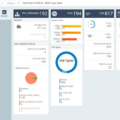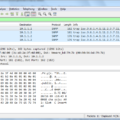The OSINT Framework is a powerful tool for security professionals, allowing them to quickly and accurately identify information about an adversary or their actions. OSINT stands for Open Source Intelligence, and it involves gathering information from publicly available sources such as social media, websites, and news articles. This data can then be used to identify vulnerabilities and plan attacks.
The OSINT framework is completely legal because it only uses data that’s available through open sources — meaning any information that isn’t kept within the organization’s own database. This makes it a great option for organizations that want to keep their risk of legal action as low as possible while still receiving valuable intelligence.
Using the OSINT framework, security teams are able to quickly gather a variety of data points from multiple sources in order to make informed decisions about potential risks and threats. They can also use this data to create profiles of individuals or organizations, allowing them to gain insight into their behavior and activities. In addition, the framework helps security teams stay up-to-date on the latest trends by providing access to real-time news and updates about threats.
The tools associated with the OSINT framework are mostly free or require a small subscription fee. Security teams can use these tools to gain insight into potential threats before they occur and respond quickly if one does arise. This helps organizations stay ahead of the game when it comes to cyber security.
In short, the OSINT Framework is an invaluable tool for security professionals. Combining open-source data with powerful tools and techniques, it allows teams to identify potential risks before they become major problems — keeping organizations safe and secure in an ever-evolving digital landscape.
The OSINT Framework: An Overview
The Open Source Intelligence (OSINT) framework is a comprehensive approach to gathering information from publicly available sources. OSINT uses technology and techniques to collect, analyze, and evaluate open-source data from the Internet, social media, and other publicly accessible sources. It allows security professionals to quickly and accurately identify potential threats, vulnerabilities, and risks posed by an adversary or their activities. The OSINT framework includes processes for collecting data from open-source sources, such as web searches, social media monitoring, message boards, news sites, and more. Additionally, the framework includes methods for analyzing the collected data in order to identify patterns or trends related to a particular adversary or threat. Finally, tools are used to evaluate the identified data for further investigation. The OSINT framework provides a comprehensive approach for security teams to gain insight into their adversaries and potential threats in order to better protect their organizations.

Source: fairobserver.com
Is OSINT Accessible at No Cost?
Yes, OSINT (Open Source Intelligence) is generally free to use. OSINT is a method of gathering information from publicly available sources, such as websites, social media platforms, news articles, and other public documents. It is used by both private individuals and organizations to gain insights into various topics.
Most of the tools associated with an OSINT framework are free and open source, so they don’t require any subscription fees. Examples of these tools include search engines like Google or Bing; web scraping tools; Social Media Monitoring tools; and content aggregators like RSS feeds. These tools can be used to collect data from the web and analyze it in order to uncover patterns or trends.
Additionally, there are some paid services that offer more advanced features for conducting OSINT investigations. These services often provide access to exclusive databases that are not available through public sources. However, even these paid services may not require a subscription fee – some providers offer pay-as-you-go plans for those who need access for short periods of time, or who need to use specific databases only occasionally.
In summary, while there may be some costs associated with certain OSINT services or databases, most of the tools related to an OSINT framework are free and open source – making it a cost-effective way of gathering intelligence from publicly available sources.
The Benefits of OSINT
OSINT (Open Source Intelligence) is a powerful tool for gathering data from publicly available sources. It can be used for a variety of purposes, including intelligence gathering, threat assessment, and risk management. It can be used to identify potential targets and gather intelligence about their activity, as well as for tracking trends and analyzing data. OSINT can also help organizations identify weaknesses in their security posture by monitoring public discourse and online activities related to their products or services. Additionally, OSINT can be used to support law enforcement investigations, such as finding evidence of criminal activity or uncovering fraud. By gathering information from multiple sources, OSINT gives organizations access to an unprecedented view of the world around them.
The Use of OSINT by Hackers
Yes, hackers often use open-source intelligence (OSINT) as part of their reconnaissance process. OSINT is a collection of freely available information from publicly accessible sources, such as news websites, social media platforms, search engine results, and other public databases. Hackers may use OSINT to uncover vulnerabilities in targeted systems or networks, identify potential victims, and extract financial data. Additionally, they may use OSINT to gain insights into organizational structure and personnel information. By combining this intelligence with other hacking tools and techniques—such as malware or phishing attacks—hackers can launch sophisticated cyberattacks with greater success.
Getting Started with OSINT
OSINT (Open Source Intelligence) is a powerful tool for gathering information from publicly available sources. The best way to start with OSINT is, to begin with, a single piece of information, such as your full name, email address, or username/alias. You can then use Google’s search operators to find as much initial information as possible.
Next, you should explore social media sites such as Facebook and LinkedIn. These sites can provide a wealth of information, so take some time to search through profiles, posts, and other content that may be relevant to your search. Additionally, you may want to look at public records such as property records and court documents that may contain useful data points.
Finally, you can use specialized tools such as Maltego and recon-ng to automate the process of gathering OSINT data. These tools allow you to quickly search multiple sources with a single query and display the results in an easy-to-read format.
OSINT is an incredibly powerful tool for gathering intelligence from public sources, but it does require some effort on your part. Taking the time to research different sources and using the right tools can go a long way in helping you get the most out of OSINT.
Tools Used for OSINT
OSINT (Open Source Intelligence) is the practice of collecting data from publicly available sources to be used for research or analysis. OSINT tools are used to aggregate, organize, and analyze this information. Some of the most popular OSINT tools include Maltego, SEON, Lampyre, Google, Recon-ng, SpiderFoot, Metagoofil, Shodan, IntelTechniques.com’s Database Search Toolkit, the harvester, and more. Maltego is a powerful tool that uses Java graphs to assist in investigations while SEON provides insights into social and digital signals. Lampyre is a great tool for cyberthreat intelligence while Recon-ng is an open-source framework for gathering intelligence. Spiderfoot is a great cybersecurity intelligence tool while Metagoofil helps to extract metadata from public documents. Shodan helps you find vulnerable devices online while IntelTechniques.com’s Database Search Toolkit offers a wide range of search tools for finding information about people or organizations. Finally, theHarvester helps users find emails and subdomains related to their targets.
Conclusion
In conclusion, OSINT Framework is an extremely useful methodology for gathering information from open sources to help the security team identify potential threats and vulnerabilities quickly and accurately. As it solely relies on public sources, it is completely legal. Moreover, most of the tools linked to this framework are free, making it highly cost-effective. By using the data collected through this framework, organizations can create a better understanding of their adversaries and plan accordingly. Thus, OSINT Framework is an invaluable tool for anyone involved in cyber security.








